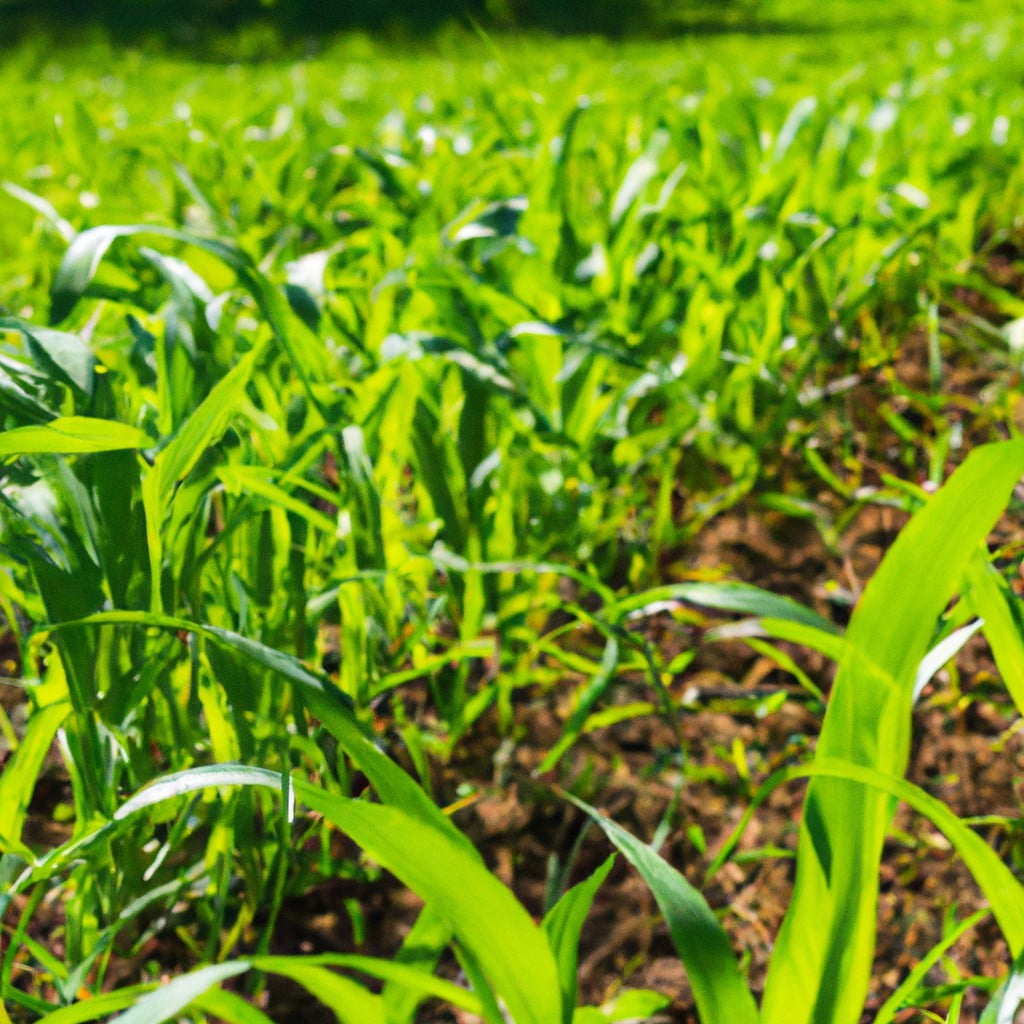No, regenerative farming is not like GMO, as it focuses on improving soil health and biodiversity, while GMO involves altering an organism’s genes.
Regenerative farming and genetically modified organisms (GMOs) are both prominent terms in the field of agriculture, but they represent vastly different concepts.
Regenerative farming is a holistic approach that seeks to restore soil health, enhance biodiversity, and sequester carbon, thereby creating more resilient agricultural systems.
On the other hand, GMOs refer to plants or animals that have been genetically engineered in a laboratory to possess certain traits, such as resistance to pests or tolerance to harsh environmental conditions.
While both have their roles in modern agriculture, they are not the same.
In the following sections, we’ll delve deeper into the specifics of regenerative farming and GMOs, highlighting their differences and implications for sustainable agriculture.
Key takeaways:
- Regenerative farming focuses on soil health and biodiversity, while GMOs involve altering an organism’s genes.
- Regenerative farming uses practices like crop rotation and cover cropping to boost soil fertility and promote biodiversity.
- GMOs are genetically engineered organisms with specific traits, such as pest resistance or tolerance to harsh conditions.
- Regenerative farming enhances soil health, carbon sequestration, and biodiversity intrinsically, while GMOs address them indirectly.
- Balancing nature and scientific advancements is crucial in regenerative agriculture.
Look Inside:
Understanding Regenerative Farming

Regenerative farming centers on a series of practices designed to enrich soil health while fortifying the ecosystem. One key element is the emphasis on diverse cover crops, which prevents soil erosion and replenishes essential nutrients.
Rotation of crops and livestock grazing is also prevalent, enhancing soil fertility and controlling pests naturally. There’s also a big focus on minimal to no-tillage farming, reducing disruption to soil ecosystems and aiding in the capture and storage of carbon dioxide.
Together, these practices aim to not just ‘sustain’ but actively rejuvenate and improve farming ecosystems.
How Regenerative Farming Works
Regenerative farming revolves around the idea of nurturing the health and vitality of the soil. This technique involves multiple strategies like crop rotation, cover cropping, reduced tillage, and the integration of livestock.
By rotating crops, farmers can interrupt pest cycles and enhance soil biodiversity. Cover crops, such as clover, provide a green blanket over the soil, preventing erosion and adding valuable organic matter when they decompose. Reduced tillage minimizes soil disruption, preserving beneficial microbial communities within the soil. Incorporating livestock helps in natural soil aeration and fertilization, through their manure.
Importantly, these strategies sequester carbon in the soil, contributing to climate change mitigation. The use of chemical inputs is minimized or completely avoided, preserving the natural integrity of the ecosystem. Thus, regenerative farming serves multiple goals – improving soil health, increasing crop yields, bolstering farm resilience, and fighting global warming.
The Basics of GMOs
Altered in a lab, genetically modified organisms contain foreign DNA from other plants, animals, viruses, or bacteria. This genetic engineering offers specific benefits such as pest resistance, drought tolerance, or improved nutritional content.
The trait of interest from the foreign DNA is identified and isolated, then it’s either inserted into the recipient plant’s DNA or used to replace a segment of the plant’s existing DNA. These modifications generally aim at improving crop yields and reducing losses due to environmental stressors.
However, the practice does raise concerns around potential health risks, environmental impacts, and effects on non-target species.
The Process Behind GMOs
Genetically modified organisms are developed using a scientific process known as genetic engineering. This involves the direct manipulation of an organism’s genes in a laboratory. Primarily, a desirable trait is identified in one organism, and the gene responsible for this trait is isolated. The isolated gene is then introduced into another organism’s DNA, resulting in a genetically modified organism.
This process can allow plants to enhance their nutritional content, resist pests, or tolerate extreme temperature or soil conditions. It’s important to note that the process of creating GMOs is markedly different from traditional breeding methods, which involve selective breeding of plants or animals over several generations to enhance particular traits. Genetic engineering can produce results in a considerably shorter timeframe.
However, the long-term ecological and health impacts of GMOs are subjects of ongoing study and debate.
Comparing Regenerative Farming and GMOs
Contrasting these two agricultural methods, several fundamental differences emerge. Regenerative farming advocates for practices such as crop rotation, cover cropping, and reduced tillage, which naturally boost soil fertility, minimize erosion, and promote biodiversity. It fosters closed-loop systems that rely less on external inputs, instead prioritizing natural processes and ecosystem services.
Conversely, GMOs come from a decidedly technological background. Scientists alter an organism’s DNA in a lab to achieve desired traits such as pest resistance or improved nutritional profile. While this approach can increase crop yield and reduce reliance on synthetic pesticides, it is largely disconnected from natural ecosystem functions.
The implications of these approaches for soil health, carbon sequestration, and biodiversity vary significantly. Regenerative farming enhances these aspects intrinsically, while GMO practices address them indirectly at best. This essential difference underlines the divergence in approach between the two methodologies.
Is There a Place for Gene Editing in the Regenerative Agriculture Movement or Is Nature Enough?
While regenerative farming principles imply a return to natural, organic methods, this doesn’t necessarily exclude the use of advanced scientific techniques like gene editing within its realm. The primary goal of regenerative agriculture is to enhance biodiversity and improve soil health, both of which contribute to an agricultural system’s resilience.
Technological advancements such as gene editing could potentially contribute to these aims, for instance, by designing crops that can better survive extreme weather or help preserve soil nutrients.
However, the adoption of such technologies must be done cautiously, maintaining the philosophy of enhancing, not hindering nature. It’s important to conduct rigorous research to ensure that any novel traits introduced through gene editing do not upset the ecological balance or lead to unforeseen negative impacts on the environment or human health.
Balancing the embrace of nature’s inherent wisdom with scientific advancement is a complex task. The solution likely lies somewhere in between, opting for a scenario where the power of nature is harnessed and supported by appropriate, thoughtfully applied science.
The practicality and ethics of incorporating technologies like gene editing into regenerative farming remain an open field of discussion among scientists, farmers, and policymakers.
Benefits and Drawbacks of Regenerative Farming
Among the many benefits of regenerative farming, the most notable is its positive impact on soil health. By reducing synthetic inputs and minimizing tillage, it fosters a rich, fertile soil ecosystem, while effectively sequestering carbon and aiding in climate change mitigation. This method also enhances biodiversity, promoting a balanced ecosystem that naturally controls pests and diseases.
On the downside, transitioning to regenerative farming can be financially and technically challenging, especially for small-scale farmers. It necessitates significant knowledge and skill in soil management, crop rotation and livestock integration. In the initial stages, crop yields may drop and there might be a temporary increase in labor requirements.
Despite these challenges, the long-term environmental, social, and economic benefits often outweigh the drawbacks. With appropriate training, funding support, and infrastructure, these challenges can be managed effectively.
Benefits and Drawbacks of GMOs
GMOs serve certain advantages. Genetic alterations can imbue crops with resistance to pests or harsh environmental conditions, thus potentially increasing yield and reducing reliance on synthetic pesticides. They can also be engineered for improved nutritional content, as seen in biofortified crops like Golden Rice.
However, their use is not without controversy. Some consumers harbor concerns over the long-term health and environmental effects of consuming GMOs, which are still under scientific review. Critics also point to the potential risks of reducing genetic diversity in our food supply and inadvertently promoting the evolution of superpests or superweeds resistant to the traits GMOs are imbued with. Additionally, the predominance of a few large corporations in the GMO seeds market raises issues about farmer dependence and seed sovereignty.
Case Studies in Regenerative Farming and GMO Use
Around the globe, numerous farmers and agricultural communities have embraced regenerative practices, experiencing significant benefits. For instance, Gabe Brown of North Dakota adopted a no-till system, diverse crop rotations, and livestock integration, resulting in a substantial increase in organic matter in his soil, improved crop yields, and lowered input costs over two decades.
Conversely, Bt corn, a GMO crop, was introduced in the United States in 1996 to combat pests such as the European corn borer. The result was a 34% decrease in insecticide use by 2010, translating into lower production costs and environmental impact. However, concerns persist about potential biodiversity loss and development of resistant pests.
These examples demonstrate the tangible effects of both regenerative farming and GMO use, reinforcing that each method has its place, benefits, and concerns in the agricultural landscape. Further research and balanced discourse are crucial in understanding their roles in the future of sustainable agriculture.
FAQ
Is regenerative farming the same as organic?
No, regenerative farming and organic farming are not the same, although advances in organic farming can contribute to the wider adoption of regenerative practices.
How is regenerative farming similar to organic farming?
Regenerative farming mirrors organic farming in its divergence from conventional methods and commitment to restoration-oriented practices, however, it distinguishes itself through a strong emphasis on soil health and carbon sequestration.
Is organic farming regenerative farming?
No, organic farming is not necessarily regenerative farming, as it does not inherently aim to rebuild or regenerate the soil, despite its intention to promote ecological balance and conserve biological diversity.
How does regenerative farming address the issues of soil degradation in contrast with organic farming?
Regenerative farming addresses soil degradation by actively restoring and enhancing the biodiversity of the soil ecosystem, through practices such as crop rotation and cover crops, whereas organic farming focuses mainly on avoiding the use of synthetic pesticides and fertilizers.
Can the practices of regenerative farming and organic farming be integrated for enhanced agricultural productivity?
Yes, regenerative farming practices and organic farming can be seamlessly integrated to enhance agricultural productivity by improving soil health and biodiversity, while also reducing environmental damage.
What are the key divergences between regenerative and organic farming in terms of environmental impact and sustainability?
The key divergences between regenerative and organic farming pertain to soil health and carbon sequestration, with regenerative farming placing higher emphasis on these, thereby potentially resulting in greater environmental impact reduction and sustainability.




